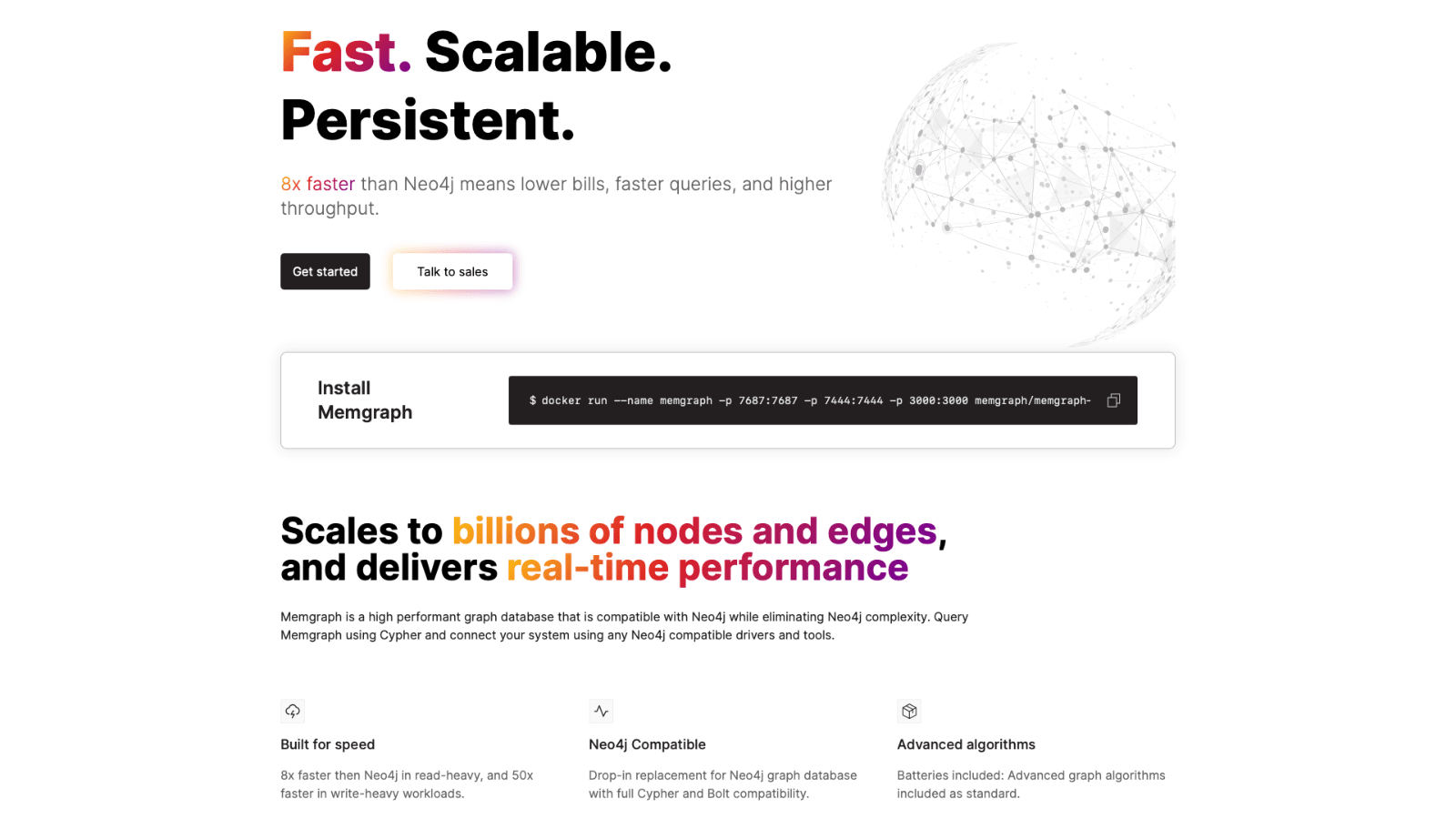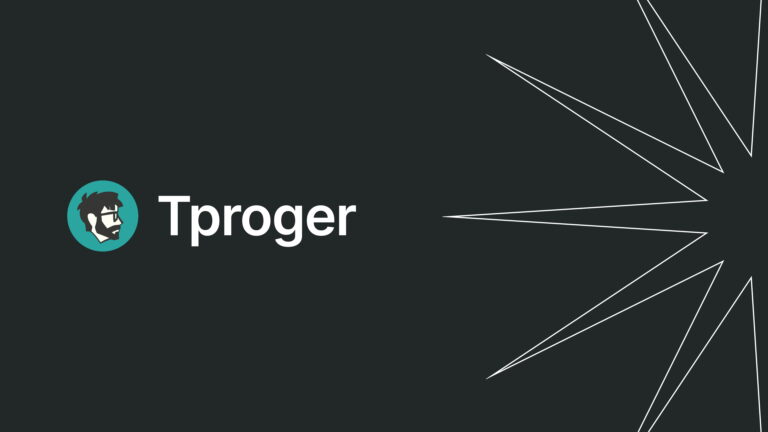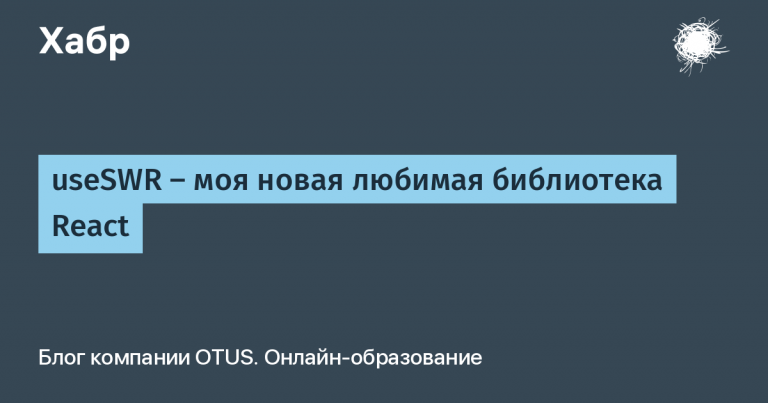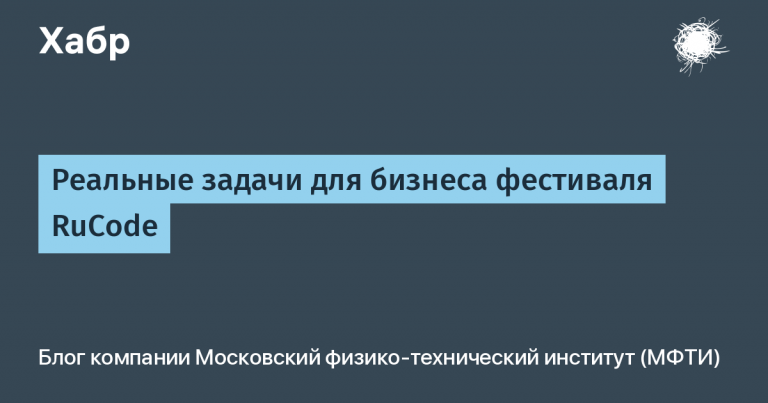8 Trends in Information Management
Databases are not a new phenomenon. How data is stored, retrieved, and presented to users has been a key aspect of web application development for many years. However, this does not mean that everything remains the same.
Today we will learn about the prospects for the development of databases – 8 trends in information management and look at 11 illustrative examples.
Many companies are now turning to newer solutions than the traditional relational databases that were developed in the 70s and still form the basis of most modern IT systems.
Companies are striving to provide us with more capabilities, such as faster access to information, new approaches to presenting data that more closely match the real world or knowledge domain we are trying to model.
Today we want to talk about some of the trends in database development that are driving this change, as well as the companies that are leaders in this area.
Ultimately, you will be able to take advantage of new developments and use these futuristic databases in your next project.
Let's begin.
How is the data landscape changing?
Over the past decade, the role of data in daily business activities has undergone fundamental changes.
They say data is the new oil. Organizations today store and process more information than at any time in history. This brought a huge number of benefits, but also created new problems.
Above all, we need secure and efficient solutions for storing, accessing and using large and diverse data sets. It is also important to maintain data quality, accuracy, and integrity while providing business users with the information they need.
This has caused a rapid growth of new approaches to data storage and processing.
8 Data Management Trends
Today we look at eight data management trends in 2023 that are increasingly dominating the market. In addition, here are a few examples of each – a total of eleven new and interesting platforms.
Without delay, let's get down to business.
1. Serverless database
So, in first place we have serverless databases.
Serverless databases are not a new concept, but they are becoming increasingly popular.
Despite the name, we are not talking about the absence of servers. This means that someone else is responsible for managing, supporting, and maintaining the infrastructure on which your cloud databases are built.
Thanks to this, users can start working with data quickly and without unnecessary complications. You don't need to build the infrastructure or understand the technical details of the setup.
This approach is often more cost-effective because you only pay for what you use.
And, as a rule, this is a scalable solution. Easier to access more databases. You simply request them and the serverless database provider provides them to you.
It is worth noting two companies that work with databases from the 70s and provide them in the form of cloud serverless services.
One of the advantages of using 70s databases as a serverless service is that they are usually cheaper than modern ones. Additionally, these databases can be easier to use and have good performance for certain types of workloads.

PlanetScale
PlanetScale is a platform that provides MySQL as a serverless service. It provides the user with a convenient control panel (dashboard), with which you can monitor traffic and track the operation of the database. In addition, PlanetScale runs highly optimized and cached queries, ideal for a wide range of data workflows.
At the initial stage, when the database needs are not great, you can use the free version or the minimum cost plan. However, when, as your business or project grows, you need reliable database performance, high performance, more information to store, or deploy databases in other regions for better availability, you can upgrade to a more expensive plan that provides the necessary resources and functionality.
This customer-driven approach allows you to save money upfront and scale your database costs as you grow.
PlanetScale also provides the ability to create separate production and development databases with just one click. This avoids conflicts and errors that may arise when using the same database for different purposes.

SupaBase
SupaBase is a platform that provides the use of a Postgres database in serverless mode. If you are familiar with Firebase, SupaBase is a great alternative that allows you to manage your data without a server. This platform provides the ability to manage authorization and configure edge functions, which are performed directly on user devices connected to the network, rather than on a central server. For example, edge functions can be used to process data generated by Internet of Things (IoT) sensors. Instead of sending all the data to a central server for processing, edge functions can filter and aggregate data directly on devices, and then send only the necessary information to the server for further processing and storage.
Again, there's a good free tier for beginners, and there's flexible pricing based on usage and availability needs. For example, you can pay for hot standby support for your database so that it is always ready to work depending on the situation.
2. Cloud-native databases
The next area we want to talk about is cloud-native databases. They not only operate in the cloud, but designed specifically for the cloud from scratch.
This means that they tend to be more robust, self-healing, and can take advantage of distributed processing in ways that other databases cannot.
Like serverless databases, they can scale as needed. And procedures such as backup, update and scaling can be fully automated. These databases have been designed with the cloud in mind, so they take full advantage of such functionality natively.

FaunaDB
FaunaDB is a database that was designed specifically to run in the cloud. It's fast and reliable. Fauna provides developers with a user-friendly interface inspired by TypeScript. The syntax and code structure in FaunaDB are similar to TypeScript.
You can set data types, and the database will check the schema of all documents you store. It also provides powerful capabilities for querying and retrieving the information you need in the right way, especially in the context of big data analytics.
Overall, FaunaDB's TypeScript-inspired interface provides a comfortable development environment for those familiar with TypeScript or JavaScript, and provides powerful tools for working with data in a safe and reliable manner.
Additionally, FaunaDB is the first document database we consider. A document database is a type NoSQL– a database that stores information in the form of documents, which are a set of key-value pairs, where the key is the name of the field and the value is the corresponding data. Documents can have any structure and contain nested documents.
When data structure changes over time or when working with unstructured data such as logs or feedback from Internet of Things (IoT) devices, we can take such information in its original form and process it later.
FaunaDB provides a professional plan that is available for free for 30 days after registration.
More advanced plans include features such as logging, unlimited developers, unlimited databases, high performance, multi-region support, and more.
There is also a free plan, which is mainly intended for those who are just learning FaunaDB. It puts some pretty tight restrictions on what you might need, but you can remove them for as little as $25 a month to be able to learn and scale your use case.
3. Branching
Next, we'll look at databases that support branching. If you've ever used Git, creating separate data structures or copies of existing data for testing or development and then merchandising them with the master branch will be familiar to you.
Now there are databases that allow you to do the same thing. We can create a new branch that will contain a snapshot of the data and structure at the current time. We can then make changes to this structure and merge it into the main branch once we are sure that the new data structure is what we want to implement.
Branching in databases allows developers to experiment with changes to the data structure without the risk of breaking the application. This also makes it easy to roll back changes if they fail. Additionally, branching allows multiple developers to work on the same project without interfering with each other and merge their changes into one common branch.

NeonDB
One of the companies that introduced us to branching is Neon. Neon is a serverless Postgres database, just like Superbase.
And, very importantly, it also provides the ability to create forks or alternative branches of execution based on certain conditions or events.
In the free version you can have up to 10 branches. You can create new branches from the dashboard or automatically generate them based on events such as git push, new feature branch or other triggers.
Neon behaves like a regular Postgres database, so we can interact with it the same way we're used to, but with the added benefit of branching.
In terms of pricing, NeonDB provides a generous free version with one project, 10 branches and 3 GB of storage.
Pricing is based on a number of metrics that scale depending on what you use.
So if you have clients who use your service frequently, you will pay more. If your service is not used or is under development, you will not pay anything – or not very much.
You can create branches with one click through the API, deploying and reintegrating them.
You can create a preview version of the database for each PR (Pull Request). This allows for good data isolation in large teams that work on several features at the same time.
4. Multi-model databases
Next, we will consider databases with support for several models (multi-model). Such databases are designed to integrate different types of data through a single backend. This means that they can work with different types of data – relational, non-relational or graph.
This gives developers the flexibility to select the most appropriate data type for a specific use case without the data being isolated from the rest of the application or ecosystem.
The main advantage here is versatility. Multi-model databases provide developers with greater flexibility.
It also allows for greater efficiency and greater focus. Sometimes, when developing a particular feature, it is better to use a relational database, even if the rest of the application is built on a document or NoSQL database, and vice versa.
And because the data is integrated through a single backend, we can also achieve a high level of consistency.

SurealDB
SurealDB positions itself as a universal multi-model database. It provides a query language that works like traditional SQL, but can also be applied to graphs and time series data.
It provides amazing query performance and allows you to use machine learning, as well as other interesting features.
SurealDB does not currently provide hosting service for its database. To work with it yourself, you need to start your machine. Thus, additional DevOps knowledge is required to use it.
However, SurealDB's efficiency and flexibility may be worth the effort.

Couchbase Capella
Couchbase Capella is another database designed to work with multi-model data.
It allows you to combine several data processing technologies into a single architecture. All data goes into Couchbase and can then be queried via the API.
Essentially, Capella is a NoSQL document-oriented database, so the data structure is typically human-readable like standard JSON. You can also query data using SQL-like syntax—including SELECT statements with JOIN (for selecting and joining data from multiple tables).
If you work with SQL and want to get into NoSQL, Capella can be a great transition option until you decide which direction to go.
There is no free plan, but you can install Couchbase on various cloud platforms yourself, without involving a provider to manage the infrastructure.
When you install Couchbase on a cloud platform yourself, you decide where your database will be stored, how data will be backed up, how security will be ensured, etc. This can be important for companies that work with sensitive information and want to ensure maximum data protection, including air-gap (air gap).
There is also a variant with a control option.
Unlike other databases, which may be billed based on usage (that is, the cost depends on the amount of data stored or processed in the database), Couchbase is billed over time. That is, you pay for the time when the database cluster is deployed and ready for use, regardless of how intensively you use it. This is because the Couchbase cluster nodes are always available, always accessing data, and always processing that data, even when you are not running active database queries. Billing over time can be more predictable and convenient for organizations that prefer to plan their database costs in advance.
5. Graph databases
Next, let's look at graph databases. These are NoSQL databases in which the relationships between data are considered as important as the data itself. They are especially useful when working with highly connected data, such as social networks or supply chains.
Graphs are also used in recommendation systems or for fraud detection.
The graphs have three main components:
A node that represents a specific entity, such as a person or a product.
Edges are connections between different nodes.
Key-value pairs, called properties, that exist on nodes or edges.
Graph databases reflect the natural structure and relationships in the real world. We often mentally represent the connections between objects or entities in the form of a graph. This model becomes more intuitive to understand and use because it reflects our normal way of thinking about the relationships between objects.
As the volume of data grows, graph databases are still capable of efficiently processing queries. There is no need to use join operators (JOIN) as is done in relational databases. They do not require joining because the relationships between nodes are already built into the database.

Memgraph
Memgraph is a graph database solution that provides a higher performance and faster alternative to Neo4j. You can run Memgraph on Docker, on your local infrastructure, or use the free Community Edition. Memgraph scales to billions of nodes and edges without losing high performance.
In addition, Memgraph supports the use of any graphs that you have already implemented using Neo4j, they can be easily imported into it.
As for pricing, the Community Edition is free. There's an Enterprise Edition that includes features like authentication, role-based access control, and full activity auditing to enhance data security. Memgraph also recently released a beta version in the cloud with multi-region support, automatic updates, and managed backups.
The cost depends on the size of your copy. If you host your database in the cloud, pricing starts at $25 per month for a single one-gigabyte instance.
6. Time series databases
Another trend in database development is time series databases. In which each data point has a timestamp. Time series data can be measurements or events that are tracked and aggregated over a period of time.
These may include metrics such as temperature, stock prices, CPE (Customer Premises Equipment) usage, and a wide range of other real-world phenomena and systems.
Time series databases must be optimized for large recording volumes. Therefore, since we expect that writing to this database will occur almost continuously, processing these records quickly and efficiently will be critical.
We also need data aggregation capabilities—for example, calculating sums and averages over specific time periods to gain insights.
As a rule, there are certain data storage policies. There may be so much data that you have to think about how long you should store it.
Time series databases must be highly scalable. They tend to scale horizontally to cope with growing volumes of information. Advanced data compression functionality is often used, given the large volumes of stored information.
Some time series databases work with specialized query languages, while others support SQL-like queries.

InfluxDB
InfluxDB is an excellent example of a time series database.
This is a specialized solution that focuses on one task. It can scale to the cloud, on-premises or at the edge. You can run it without a server or on your own infrastructure.
Influx also supports SQL as a native language and also provides other methods for working with data.
For example, InfluxDB provides an SDK (Software Development Kit) for almost all programming languages, including JavaScript, Python, Go, C# and Java.
In terms of pricing, you can start for free. This allows us to get started right away with this fully managed, flexible, multi-user service. You only pay for what you use when you exceed your limits.
Additionally, Influx offers one-click installation to get started on self-hosted plans.
You might also like our guide to digital transformation platforms.
7. Introduction of artificial intelligence (AI) into databases
The next trend we want to talk about is the introduction of artificial intelligence (AI) into databases. Embedding AI allows you to get truly powerful data management and analysis tools directly into the database.
As database administrators and developers, we can use AI and machine learning locally. For example, using AI models using SQL or improving our data over and over again using machine learning.
There are many advantages to doing this directly in the database.
First, it's easier to operate—we use the same query language we're already familiar with—so we can use AI without learning new technologies.
On the other hand, it is a more efficient, productive and secure method. We do not transfer data from our database to another system for processing.
Everything happens on site, which means that we reduce costs and reduce the risks of various attacks and data leaks.

MindsDB
MindsDB is an artificial intelligence (AI) focused database. It integrates with many different data sources such as Slack or Shopify, Postgres and others. MindsDB can also ingest real-time data and apply advanced machine learning and AI techniques to it.
And then it can refine that data again, and again in a circle, to achieve incredibly powerful functionality, such as creating your own chatbot or large language model.
MindsDB can also be used to detect fraud or anomalies. If you are planning to create an application using AI, then implementing it at the database level provides many possibilities.
As for pricing, there is a demo level where you can just launch MindsDB and look at it for free. And also an open source version that deploys itself with one click.
As such, MindsDB is aligned with several of the trends discussed in this guide. We have a multi-model, cloud-native infrastructure, and we're adding additional AI components to make it incredibly powerful for building productive AI-powered applications.
8. Databases and low-code development
BudiBase is an application creation platform that helps teams turn their data into action.
We strive to help teams build professional and effective internal tools based on your business data.
We provide custom connectors for building user interfaces and processes based on Postgres, MySQL, MSSQL, Couch, Mongo, Arango, S3, Oracle, Google Sheets, REST API and many more – along with support for custom data sources.
If you want to create an application, but have not yet decided on a data source, we already have our own internal database. BudibaseDB offers a fast and intuitive way to create a data model from scratch—including support for relationships and JavaScript formula variables.
Budibase allows companies to save thousands in development costs. Check out our feature overview to learn more.
In conclusion, we would like to remind you about the open lesson that will be held on March 11th. Here we will look at the Aggregation Framework: why it is needed, main capabilities and limitations. You can sign up on the NoSQL course page.





